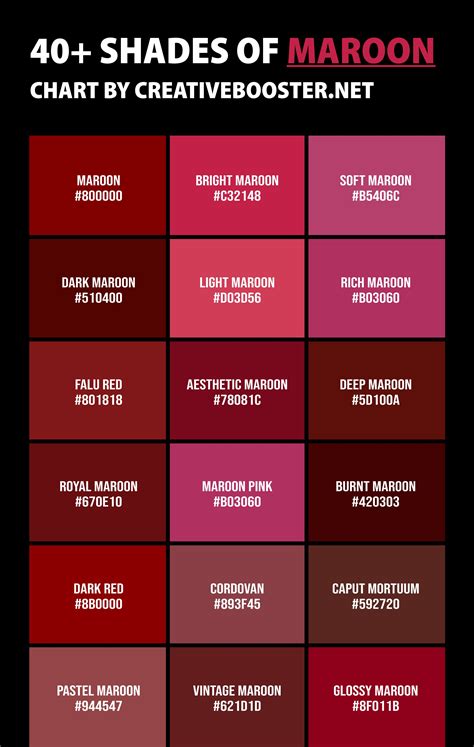Introduction
Maroon colour hair has become an increasingly popular trend in recent years, with its rich and vibrant hue turning heads wherever it goes. Whether you’re looking for a subtle change or a bold statement, maroon hair offers a wide range of shades to complement any skin tone and personal style.

History and Origins
The use of maroon as a hair colour dates back to ancient civilizations, with evidence of henna-based dyes being used in Egypt as early as 3,000 BC. Maroon hair also gained popularity in the Victorian era, where it was seen as a symbol of wealth and status.
Statistics and Popularity
According to a recent study by the International Hair Color Society, maroon hair has become the third most popular hair colour globally, with an estimated 100 million people sporting the shade. Its popularity has been attributed to its versatility, as it can be customized to suit individual preferences.
Shades and Variations
Maroon hair encompasses a wide spectrum of shades, ranging from deep, almost burgundy tones to brighter, more vibrant reds. Some of the most popular variations include:
- Chestnut Maroon: A rich, warm shade that blends brown and red tones.
- Plum Maroon: A deep, purple-tinged maroon that adds a touch of mystery.
- Crimson Maroon: A bold, intense shade that exudes confidence.
- Ruby Maroon: A vibrant, gemstone-inspired hue that adds a touch of glamour.
- Scarlet Maroon: A fiery, orange-tinged shade that commands attention.
How to Achieve Maroon Hair
Achieving the perfect maroon hair colour requires careful consideration of your natural hair colour and desired shade.
- Professional Dyeing: For a precise and long-lasting result, it is recommended to seek professional dyeing services.
- Home Dyeing: For a more affordable option, home hair dyes can be used, but it is important to carefully follow the instructions and conduct a patch test prior to application.
- Natural Dyes: Henna and other natural dyes can also be used to achieve maroon hair, but the results may vary depending on the individual’s hair type and condition.
Tips and Tricks
- Colour Mixing: To create a custom maroon shade, consider mixing different shades of red and brown hair dye.
- Toning: Adding a toner to your maroon hair can enhance the colour and add shine.
- Maintenance: Regular touch-ups are essential to maintain the desired maroon shade, especially for those who wash their hair frequently.
- Heat Protection: Maroon hair can be prone to fading, so it is important to use heat protectant sprays when blow-drying or styling your hair.
Step-by-Step Guide to Dyeing Your Hair Maroon
- Gather necessary supplies (hair dye, gloves, brush, mixing bowl).
- Conduct a patch test to ensure no allergic reactions.
- Apply petroleum jelly to your hairline to prevent staining.
- Mix the hair dye according to the instructions.
- Section your hair and apply the dye thoroughly.
- Leave the dye in for the recommended time.
- Rinse your hair with cool water and shampoo.
- Condition your hair to restore moisture.
Pros and Cons
Pros:
– Versatility in shades and styles.
– Rich and vibrant colour that turns heads.
– Suitable for all skin tones and personal styles.
– Can be achieved through both professional and home dyeing.
Cons:
– Requires regular touch-ups to maintain colour.
– Can fade over time, especially when exposed to sunlight or heat.
– May not be suitable for all hair types (e.g., bleached or damaged hair).
Creative Applications
Beyond traditional hair colouring, maroon can inspire innovative applications in various fields:
- Interior Design: Maroon accents can add a touch of elegance and sophistication to home décor.
- Fashion: Maroon clothing and accessories can complement and enhance any wardrobe.
- Art and Design: Maroon hues can evoke passion, warmth, and creativity in artwork and design.
- Cosmetics: Maroon-tinted lipsticks and eye shadows can create a bold and dramatic look.
Conclusion
Maroon colour hair is a captivating and versatile trend that has captured the attention of fashion enthusiasts worldwide. With its wide range of shades and applications, maroon offers endless possibilities for personal expression and creativity. By understanding the history, variations, and techniques involved, you can achieve the perfect maroon hair colour and embrace the fiery allure of this vibrant hue.
Table 1: Popular Maroon Hair Shades
| Shade | Description |
|---|---|
| Chestnut Maroon | Warm, brown-red blend |
| Plum Maroon | Deep, purple-tinged |
| Crimson Maroon | Bold, intense |
| Ruby Maroon | Vibrant, gemstone-inspired |
| Scarlet Maroon | Fiery, orange-tinged |
Table 2: Tips for Dyeing Hair Maroon
| Tip | Description |
|---|---|
| Mix colours | Create custom shades by blending different reds and browns |
| Tone | Enhance colour and add shine |
| Maintain | Regular touch-ups to keep colour vibrant |
| Protect | Use heat protectant sprays to prevent fading |
Table 3: Pros and Cons of Maroon Hair Colour
| Pros | Cons |
|---|---|
| Versatile shades | Requires regular touch-ups |
| Rich and vibrant | Can fade over time |
| Suitable for all skin tones | Not suitable for all hair types |
| Professional and home dyeing options |
Table 4: Creative Applications for Maroon Colour
| Application | Description |
|---|---|
| Interior Design | Elegant and sophisticated accents |
| Fashion | Complementary clothing and accessories |
| Art and Design | Evocative and creative hues |
| Cosmetics | Bold and dramatic lipsticks and eyeshadows |
